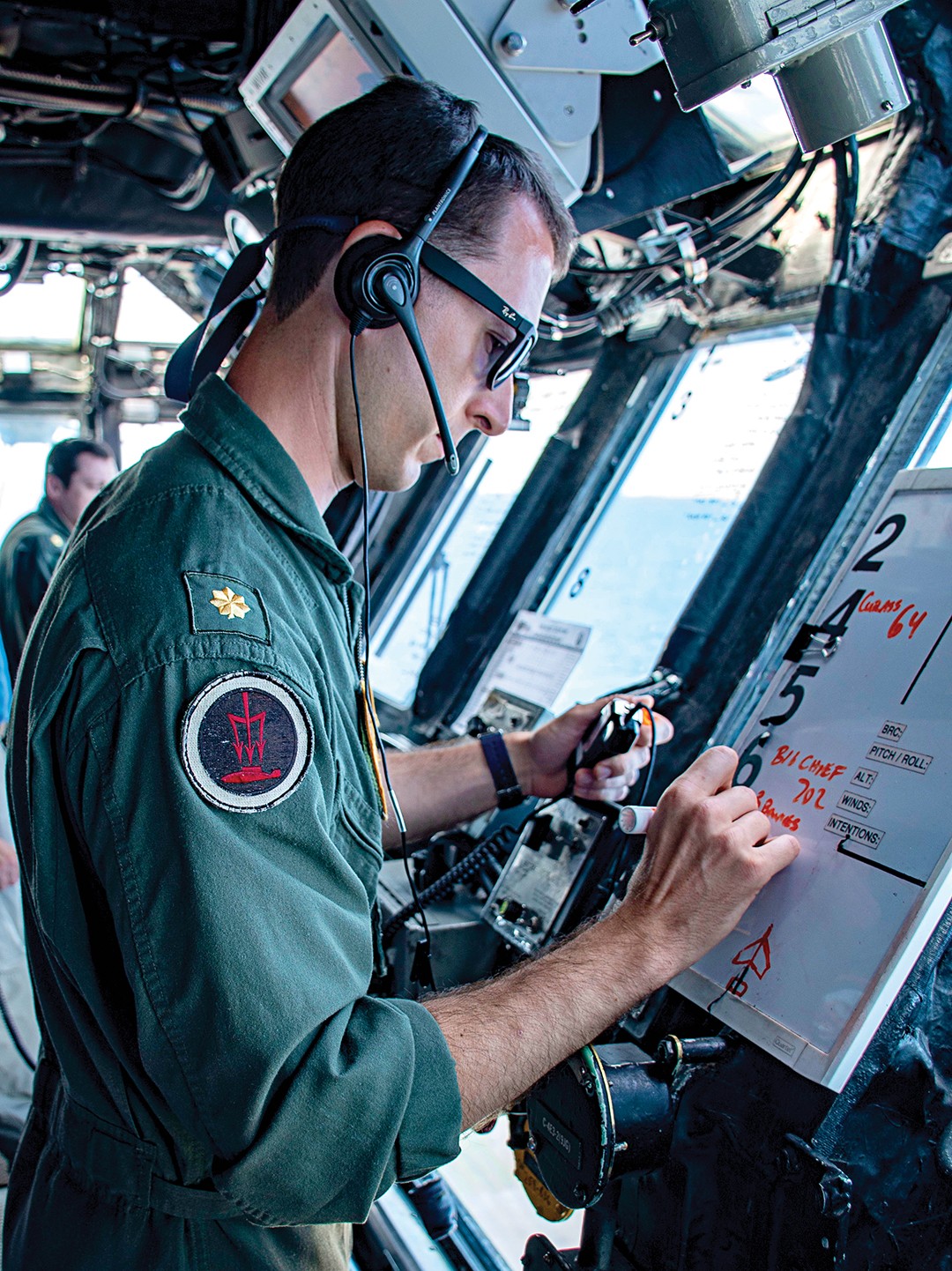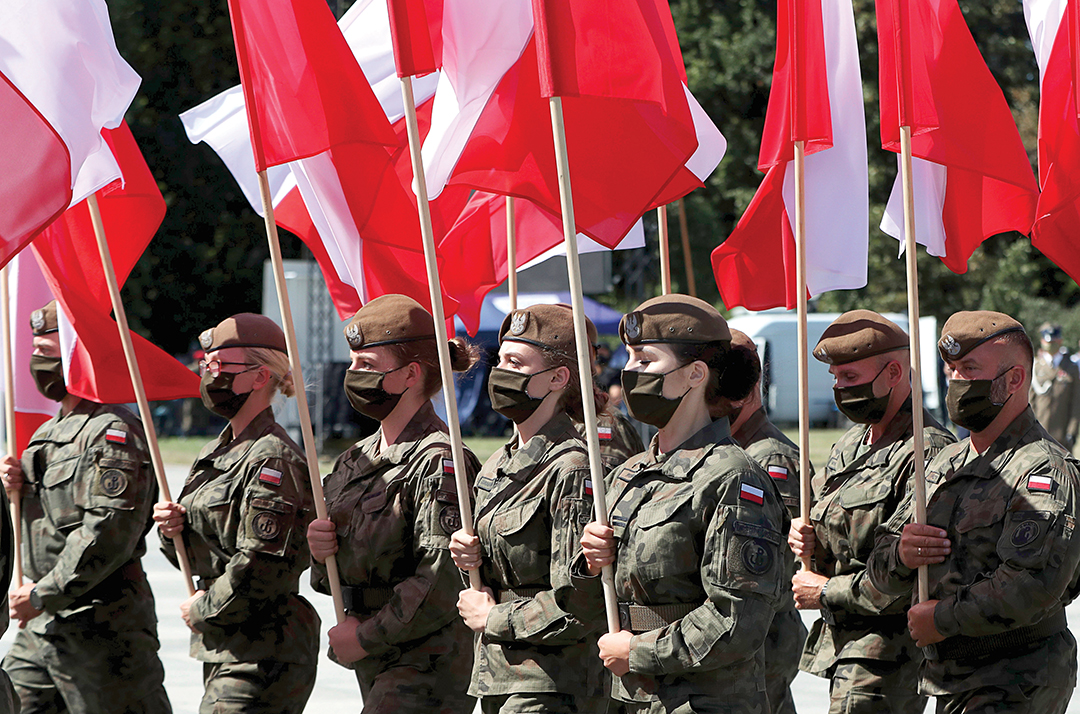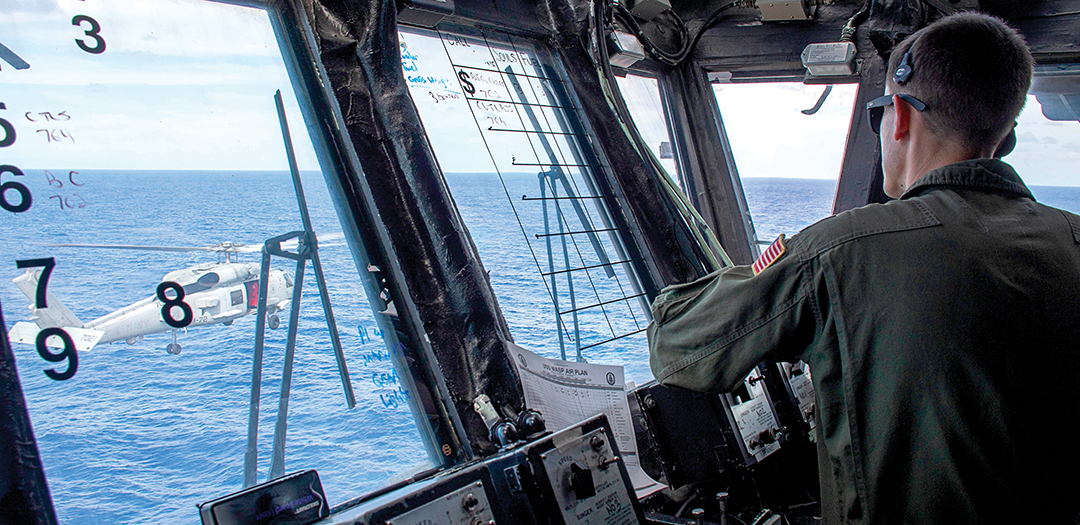Defense pact between Poland, U.S. designed to deter Russian aggression
THE WATCH STAFF
The United States is establishing a significant military presence in Poland as the NATO allies collaborate to defend their homelands and keep a watchful eye on an increasingly assertive Russia. The defense pact between Poland and the U.S. signed in August 2020 represents a pledge by the allies to fight Russian aggression in areas ranging from cyberspace to combating disinformation.
U.S. Secretary of Defense Lloyd J. Austin III spoke by phone in mid-February 2021 with Polish Minister of Defence Mariusz Błaszczak to “reinforce the importance of the longstanding U.S.-Poland strategic alliance,” Pentagon Press Secretary John Kirby said in a statement. The defense leaders discussed a range of issues, including Poland’s commitment to defense modernization, the U.S. rotational force presence in Poland and regional security. They also emphasized the significance of the recent Enhanced Defense Cooperation Agreement.
During the signing ceremony in 2020, Polish President Andrzej Duda characterized the pact as an important milestone. “This is going to be an extended guarantee: a guarantee that in case of a threat, our Soldiers are going to stand arm in arm,” Duda said, according to The Associated Press (AP). “It will also serve to increase the security of other countries in our part of Europe.”

The agreement allows for the enhancement and modernization of existing capabilities and facilities by allowing U.S. forces access to Polish military installations. It also provides a formula for cost sharing. “The opportunities are unlimited. The resources will be available,” then-U.S. Secretary of State Mike Pompeo said at a news conference alongside Polish Foreign Minister Jacek Czaputowicz, AP reported. “Troop levels matter … but the world has moved on, too,” Pompeo said, referring to threats posed in space and cyberspace and through disinformation campaigns. He said the defense pact would allow joint work on those threats.
The defense agreement places a sharp focus on Russia, which annexed Crimea from neighboring Ukraine in 2014. It “enhances our deterrence potential because we are closer to the potential source of conflict,” Czaputowicz said. The deal, which took months to negotiate, will strengthen NATO’s deterrence efforts and help free countries in Europe and around the world. “The agreement will enhance our military cooperation and increase the United States’ military presence in Poland to further strengthen NATO deterrence, bolster European security, and help ensure democracy, freedom, and sovereignty,” then-President Donald Trump said in a statement.

Geographic Significance
Poland has long been a major focus of NATO efforts to deter Russian aggression in Europe. A key reason is that Poland is on NATO’s eastern perimeter and provides land access to the Baltic states. Although Ukraine is not a NATO ally, the Russian occupation of the Crimea signaled to many military observers that NATO allies, “particularly those in Eastern Europe, could once again by threatened by Moscow,” according to a July 2020 analysis published by Eurasia Review. “In response, the United States and its NATO allies have undertaken a number of initiatives to emphasize NATO’s collective defense agreements, thereby assuring allies of their own security while simultaneously deterring Russian aggression.”
The U.S. focus on Poland prompted speculation about how Russia might react. “The situation is complicated by Kaliningrad, a 5,800-square-mile Russian exclave wedged between Poland and Lithuania,” the Eurasia Review analysis states. “Kaliningrad is a key strategic territory for Russia, allowing the country to project military power into NATO’s northern flank. The territory has a heavy Russian military presence, including the Baltic Fleet and two airbases. Russia has deployed Iskander short-range nuclear-capable missiles in Kaliningrad.”

PETTY OFFICER 2ND CLASS ERIC SHORTER/U.S. NAVY
Support From Baltics
It’s that proximity to Poland and the heavy Russian presence on its doorstep that has Baltic countries praising the defense support from the U.S. “We very much like the support, the agreement between the United States and Poland,” Lithuanian Defense Minister Raimundas Karoblis told the Washington Examiner, a U.S.-based news website and weekly magazine. “We understand this is not only for Poland, but it’s also about the Baltic countries. The Baltic countries and Poland are treated as one region from a defense point.”
Polish General Staff Air Force Lt. Col. Tomas Pietrus told the website that the positioning of U.S. troops in Poland deters Russia in the east. “We are on the eastern front of NATO,” he said on the sidelines of air defense exercises at Siauliai Air Base in Lithuania. “So, we need to be able to operate, to defend ourselves firstly, then the coalition.”
The defense cooperation agreement is an important signal to Russia, the Lithuanian defense minister said. “The signaling is very important, both for the deterrence and the defense factor,” he said.
Deterrence at Sea:
USN 2nd Fleet protects vital shipping lanes
U.S. NAVY 2ND FLEET
At the forefront of the deterrence effort against Russian military operations is the U.S. Navy’s 2nd Fleet (C2F), which was revived in 2018 to combat the increasing challenge of Russian submarine threats while also addressing employment of Navy forces in the Arctic.
As the Arctic opens up, North Atlantic shipping lanes will become more important as the U.S. and its European allies forge closer ties to protect each other’s homelands. “Within an increasingly complex global security environment, our allies and competitors alike are well aware that many of the world’s most active shipping lanes lie within the North Atlantic,” said Vice Adm. Andrew Lewis, commander of C2F.
The fleet’s structure is inherently flexible to help address 21st century challenges. The Maritime Operations Center (MOC), the heart of the organization that directs the ships, submarines, aircraft and other units assigned to the fleet, is designed to be modular and rapidly deployable, adapting to meet any assigned mission. The MOC deployed in the Baltic to lead the multinational BALTOPS 2019 exercise; to Keflavik, Iceland, to command and control a surface action group as it traversed the Atlantic Ocean; and to Camp Lejeune, North Carolina, as part of a naval integration exercise with the U.S. Marine Corps.
This flexibility is necessary because the C2F can be called to operate in the Atlantic or the Arctic, portions of which are in the areas of responsibility (AOR) of U.S. Northern Command (USNORTHCOM) and U.S. European Command (USEUCOM). C2F’s ability to modify its command and control arrangement lets it integrate across the Atlantic with U.S. Navy 6th Fleet counterparts — a visible representation of the U.S. commitment to security in the Atlantic, the Arctic and the European theater.
This arrangement recognizes the growing challenge of Russian submarine operations. Submarines from Russia’s Northern Fleet must maneuver through the Greenland-Iceland-United Kingdom gap before entering the Atlantic. Critically important during the Cold War, these waters are divided between the commanders of USNORTHCOM and USEUCOM. This seam between geographical combatant commands can be stitched together by a fleet specifically designed to operate seamlessly.
Protecting North America isn’t just a job for the U.S. Navy. Lewis also is commander of Joint Force Command Norfolk (JFCNF), a NATO command established to support readiness and defend lines of communication and resupply routes in the North Atlantic. JFCNF brings the perspectives of U.S. allies such as Canada, Denmark, France and Norway to C2F operations.
This helps the staff develop plans to address challenges ranging from anti-submarine warfare to integrating defensive cyberspace into routine operations.
“JFC Norfolk’s mission is fundamentally joint and multinational,” Lewis said at the command’s initial operational capability ceremony, “requiring close coordination across all warfighting domains, with close cooperation among various national and allied commands working in the region.”
Deterring adversaries requires these new approaches because the Atlantic Ocean is considered contested space. All U.S. Navy ships and submarines that operate in the Atlantic must be ready to fight, regardless of their phase of training. Fleet guidance recently issued by Lewis made this perfectly clear. “A ready-to-fight mentality remains our highest priority. I expect that ships, aircraft and marine units operating in the C2F AOR are fully trained, qualified and proficient in order to expertly handle the full range of combat operations,” he said.
C2F in 2019 directed the USS Mahan, an Arleigh Burke-class, guided-missile destroyer, to monitor the Russian Navy’s intelligence ship Viktor Leonov. The Mahan was in the middle of its overseas certification process when it was called into action. Its reports about the Leonov’s unsafe actions, such as operating in fog with no running lights and not responding to the hails of nearby merchant ships, served as notification for the U.S. Coast Guard to warn nearby vessels through a maritime safety information bulletin. The Mahan’s readiness to conduct maritime surveillance on short notice is testament to the new realities of great power competition.

